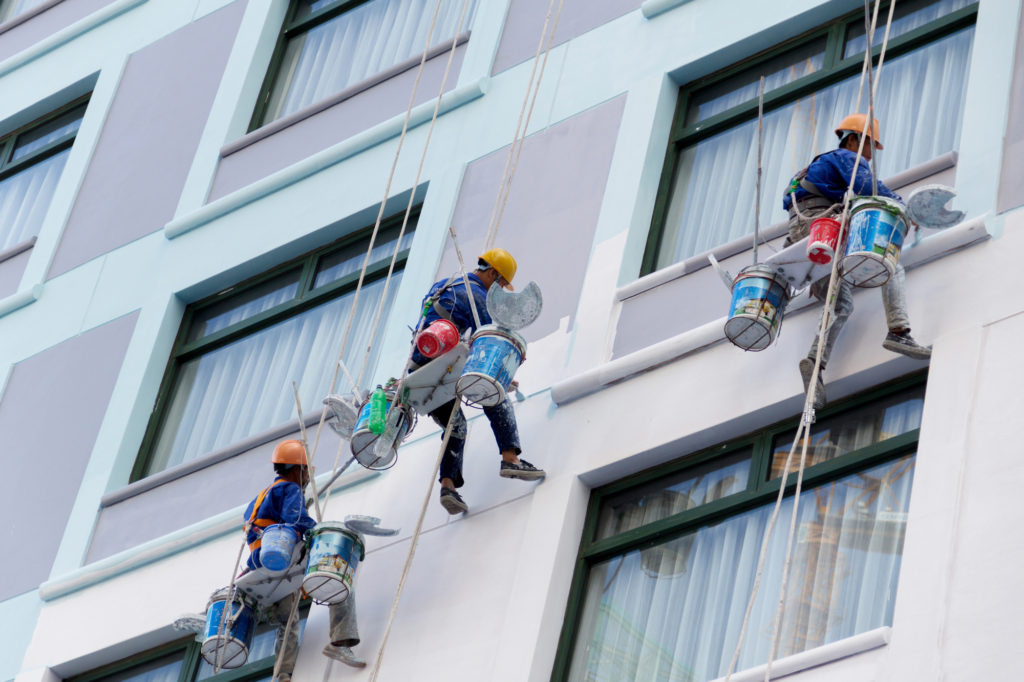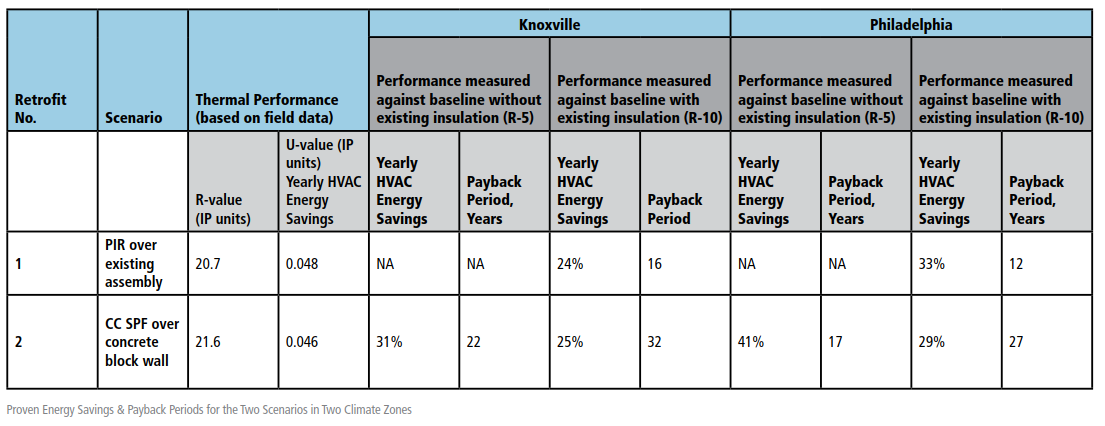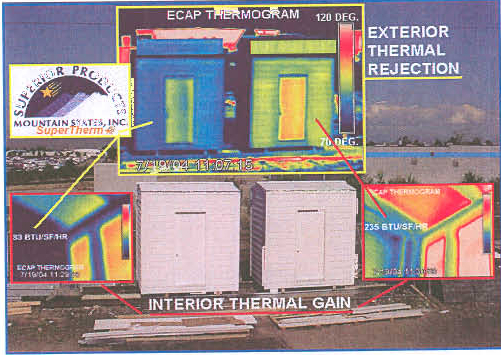Modern cool coatings transform the built environment
Better Painting & Coatings is a full service painting contractor specializing in thermal insulation coatings to help businesses improve their buildings, increase profit margins and meet sustainability goals.
Dear Building Professional,
Better Buildings start with a better enclosure. When you tighten up your enclosure (reduce air flow and dehumidify) and repel heat, your other related building systems, indoor air quality, heating and cooling and maintenance, run more efficiently.
Up to this point there has not been a cost effective way to add insulation or an air/moisture barrier.
Now this is a simple process with a functional coating called Thermal Insulation Coating. Functional coatings are industrial grade “paint” engineered for a specific purpose. The purpose of some of the coatings I work with is heat mitigation and containment that produce passive cooling.
You will change your building when you change your paint to a thermal insulation coating (TIC)
You can keep more of the heat you pay for, not the excess heat you have to pay to cool. Your building will become a more profitable, energy efficient and comfortable building by repelling and/or containing heat, air and moisture instead of resisting it’s movement in the walls with insulation. Yes, Thermal Insulation Coatings can do that. Paint on easy.
Thermal Insulation Coatings (TIC) give building owners a more profitable, energy efficient and comfortable building with…
- Increased lease rates
- Increased asset value
- Very low maintenance
- Lower overhead
- Improved building performance
- Improves indoor comfort
- Extends the life of the surface
- Reduced peak power demand
- Possibly expensed on taxes the same year
- ROI 2 – 5 years, depending on use and application
- Improve energy efficiency
- Sustainable
This results in a more enjoyable place to live or work. There are less temperature swings, it’s quieter when used on an exterior, or keeps sound contained when used on an interior. This promotes productivity and performance. For office spaces or multi family, it could mean higher lease rates and lower turnover. Seems like a good return for adding some extra to the paint budget.
The advent of thermal Insulation coatings for enclosures advances and simplifies the remodeling process. Instead of complicated construction for adding more insulation to the walls or roof, we can see significant gains in energy efficiency (profit margins) by making what we have more effective with a coat of specialized “paint”.
What’s a thermal barrier/insulation coating?
A thermal insulation coating is a thin film coating that blocks heat load through all three forms of heat transfer: conduction, radiation and convection. This increases insulation’s ability to do it’s job and minimizes the effects of thermal bridging. These are high performance industrial coatings that have been around many years.
They came out of the commercial/industrial roof coating world in 1989. It was engineered from the ground up to withstand the worst weather and climate conditions. It’s an Energy Star/CRRC rated roof coating so it’s considered a “reflective roof coating”. But it does more than reflect light.
How does a thermal insulation coating work?
Think of your building as a heat sponge. It absorbs as much heat as it can during the day then pumps it through to the inside. Then the process reverses itself for the night. But my coatings stop 90% – 95% of the heat from loading in the first place, instead of resisting it once its loaded. Which is what insulation is designed to do. R-value = Resistance value. Heat blocking instead of 100% heat absorption and resistance, which is what is happening now. Fiberglass insulation losses about 30% of it’s R-value with 2% humidity. It’s not tested for the effects of humidity or air movement.
A thermal insulation coating enhances existing materials by significantly blocking the heat, air and moisture that normally load into a roof or walls and degrades insulation values. They provide containment for heating and cooling and let less escape into the outdoors or get in. Keep what you have longer and reduce HVAC runtime.
The combination of a 4 ceramic blend suspended a proprietary resin combination creates a unique coating often imitated but never duplicated. The ceramics block 95% of solar radiation and the coating emits 91% of absorbed heat. Moisture and air movement are reduced with a safe but effective 4 – 8 perm rating. It’s worth noting that one of the 4 ceramics blocks 99% of Infrared light, which carries about 52% of the sun’s heat. Heat transfer through the coating is minimal at best. In fact, lab testing shows the coating only conducts 4 BTU’s/sf/hr/F (22.71 W/m²/K).
Safety and comfort enhancements
Super Therm has a Class A, UL, FM and NASA fire rating with 0 smoke and flame spread. It would rather self extinguish than burn. Hypothetically, a fire could be contained to a single apartment rather than have it burn down the whole building.
It also reflects up to 68% of sound (STC of 39-41). This keeps the noisy tenants from bothering the neighbors so much or keeps out the noise from the neighborhood. Quiet. One Canadian client boosted their indoor temperature 28°F (16°C), from 9°C to 25°C. That’s not typical, but achievable under certain circumstances. What if you could get 50% of that performance increase, would that be worth looking into?
3 Mini Case Studies
Case study No 1: On CMU interior apartment wall.
My thermal insulation coating on a 1964 apartment building in southern Germany. Super Therm was applied directly to interior of exterior CMU walls inside the apartment. The purpose of the this test was to determine “whether the coating with the product Super Therm® (at the above mentioned buildings) exhibits heat insulating properties”. The results were dramatic.
This reduction in cold coming from the outside would be equally valid for heat escaping from the interior.
Case study No 2: Traditional enclosure remodel
The Department of Energy (DOE) Building Technologies Office (BTO) has a goal to reduce building energy use by 50% by 2030. In turn, this goal drives the need for innovative wall retrofit solutions that will contribute to energy efficiency targets.
Standard component retrofits such as HVAC or lighting upgrades present a limited scope for retrofit. This is because greater energy savings can be achieved when envelope retrofits are considered along with standard component retrofits. Integrated retrofits are essential to achieve more than 50% reduction in energy consumption.
These results are from a comparison case study using the normal remodeling methods of removing the existing wall to add more insulation or to add more insulation to the existing wall. PIR foam board and closed cell spray foam were the insulation methods compared. Detailed engineering, notes, modeling and testing were done. The installation required several trades and business interruptions normally associated with improvements like this.
Case study No 3: Denver, CO energy usage
Test results from Florida’s Energy Conservation Assistance Program report done in Denver, CO. compares my Thermal Insulation Coating with an identical building’s white paint.
- In every instance the Field test resu lts concur with the manufacturers published data on the products anticipated performance curves obtained using in laboratory test methods.
- In every instance the building coated with the Super Therm product enhanced the performance of standard insulation products.
- These performance enhancement properties were found to be equally effective on both roof and side wall applications.
- The differences created by the SUPERTHERM product concerning load reductions produced by thermal conduction, convection and absorption were significant. Additionally, significant reductions in moisture infiltration were also noted.
- My TIC reduced 1,037 BTU’s to 766 BTU’s to maintain the same comfort level, depending on levels of direct sun light (solar gain) 26% – 30%.
Conclusion
Up to this point, upgrading a building’s walls or roof has been awkward, complicated and expensive. It no longer needs to be that way if you use a thermal barrier/insulation coating. TIC’s are bridging the gap in building enclosure technology with a cost effective and easy to use system that take some of the “cons” out of construction.
Use them independently or in conjunction with infrared thermography, energy audits, air leakage tests or other energy assessments or conservation methods.
The low hanging fruit is using it as a roof restoration method. Other uses are for RTU’s and duct work, walls inside and out, refrigerated buildings/trucks/units/RV’s, and anywhere yo want to keep something cool.




